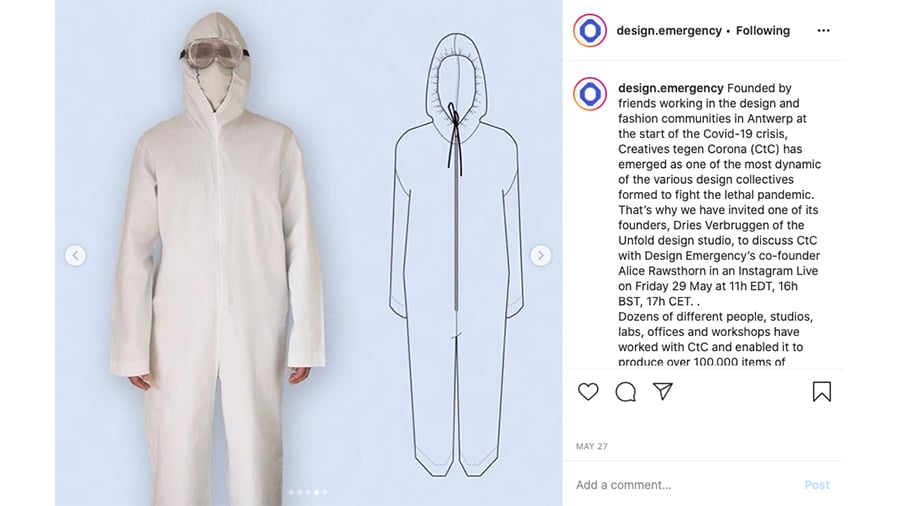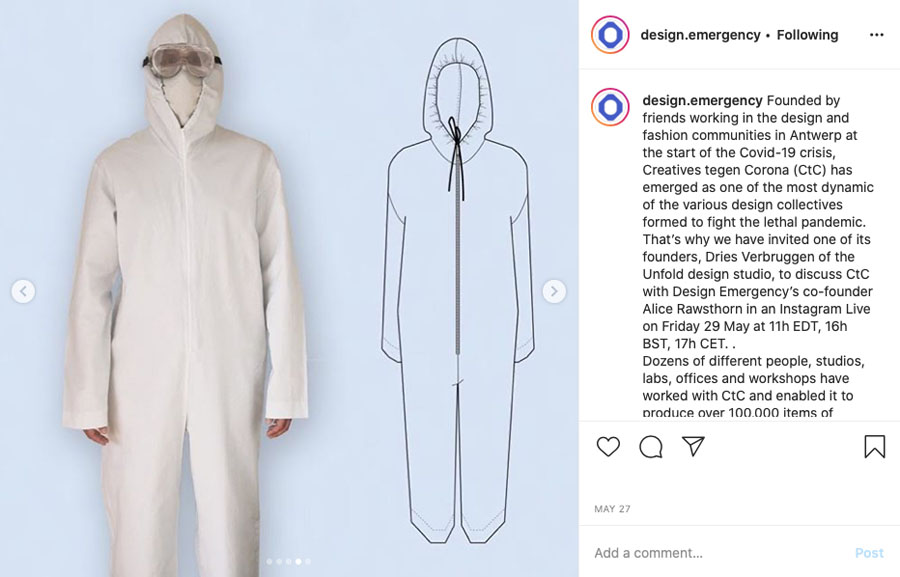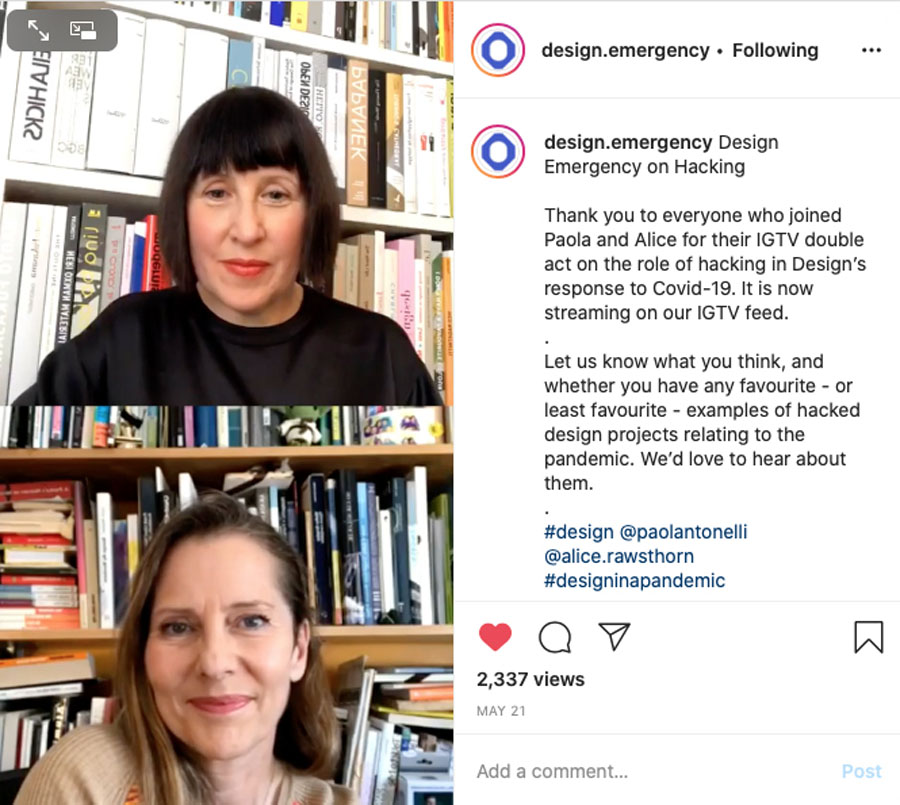
June 26, 2020
Paola Antonelli and Alice Rawsthorn’s Instagram Live Series Examines COVID-19 Designs
The design.emergency initiative has unpacked everything from collaborative PPE production to object hacking and the power of symbolic imagery.

In the era of the pandemic, the design world’s museums, galleries, manufacturers, organizations, and independent talents have all gone virtual. An endless list of COVID-19-induced cancellations has driven most to find clever ways in which to present their work and engage their audiences. Many have opted for viewing room and interactive exhibition formats, while social media and video communication services have also played a vital role.
The domain’s fast adaptation has been a testament to its inherent resourcefulness. Utilizing features like Instagram Live and Zoom, a slew of companies, institutions, culture-makers, and creatives have joined established publications—Metropolis included—in creating thematic talk series. Though this flurry of activity has quickly oversaturated the market, a few recent initiatives have been able to stand out from the crowd.
Among these is design.emergency, an interview series launched in early May by MoMA senior design curator Paola Antonelli and renowned critic Alice Rawsthorn. The duo has tapped into their shared wealth of knowledge to explore design’s implication in the current pandemic.
Twice-weekly conversations with leading experts and creatives in various fields have covered subjects as varied as health-care architecture, medical illustration, hacking, data visualization, symbolism, and collaborative PPE production. Antonelli spoke to Metropolis about the impetus behind this entirely new curatorial endeavor.

Metropolis: You’ve covered a wide range of topics so far through design.emergency. For you, what is is the through-line that ties these different stories together?
Paola Antonelli: Alice and I have both spent our careers expanding the definition of design. At MoMA, I’ve worked with video games and information design. In her latest book Design as an Attitude, Alice goes so far as to consider gesture as another application. We share the belief that this discipline is enmeshed in every aspect of our world; the good, the bad, and the ugly. It’s important to show that design is not only cute chairs, and prove the power of this discipline; those who are producing design might not even know they’re doing so.
From this vantage point, it’s easy to see how our general culture has not yet fully formulated or accepted the idea of design. A crisis like COVID-19 presents an excellent opportunity to reveal how it can come alive, especially when in reaction to an emergency but also in providing reparative and informative solutions. Design is all about helping people deal with changes that are sometimes uncomfortable—and making revolutions become life.
Though the situation is rapidly changing and we acknowledge that other significant issues have come to light, our goal is to continue our focus on COVID-19 and to reflect its evolution in the topics we choose to cover going forward. Eventually, we’d like to publish a book.

Metropolis: Instagram is itself a type of design in this respect. Why did you choose this particular platform?
PA: Having been a guest in a number of Instagram Live talks early on during the pandemic, I realized that this would be the perfect tool for Alice and me to develop a new project. She had already been utilizing her feed for a series of Design in a Pandemic and Design and Disaster posts. It made sense for us to continue to employ this service. Zoom would have been too formal. Different social media platforms reflect different personalities, it’s not just generational.
As critics, we need to find the right channels and the right voice to bring people in to create universal interest. And one way truth is achieved—even though I often say that I’m more comfortable with objects than with people—is when you show humans making things happen. It’s one thing to write a persuasive post about the image of the coronavirus concocted by the CDC, explaining that the S proteins were augmented to create this kind of hell raiser picture. It’s another thing to talk to medical illustrator Alissa Eckert, who can offer a more in-depth and personal perspective.

Metropolis: In your ongoing research for this project, have you uncovered any new methodologies that have emerged out of this crisis?
PA: There aren’t entirely new categories per se, but perhaps more a sense of recalibration and reorientation. Architects and designers are now using their 3D printers to create shields and other PPE. Game designers are developing new programs that replenish ICU workers. Whenever there are major changes in our world, designers are the ones that help politicians, scientists, and sociologists pivot. Much like the 2008 economic crisis, COVID-19 is forcing us to make big adjustments and realign our priorities.
In terms of methodologies, practices like hacking have always been around in some form or other. What has been emerging for a few years now is the idea of forensic design that relies heavily on deeper investigations and more applicable results. This has taken the place of what was before called critical or speculative design. This particular approach was too cute and self-conscious at times. What is currently arising is less fluff and more real things. Bigger issues like environmental degradation and social injustice are still present. There’s no space for obfuscation in this regard.
You may also enjoy “After COVID-19, What’s Next for Landscape Architecture?”
Register here for Metropolis Webinars
Connect with experts and design leaders on the most important conversations of the day.













